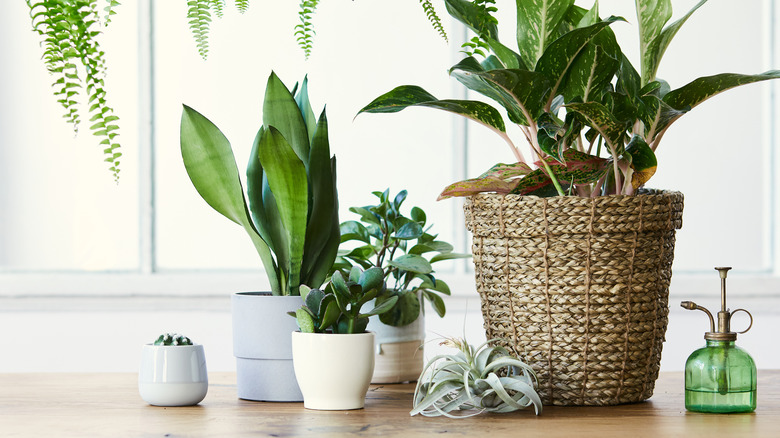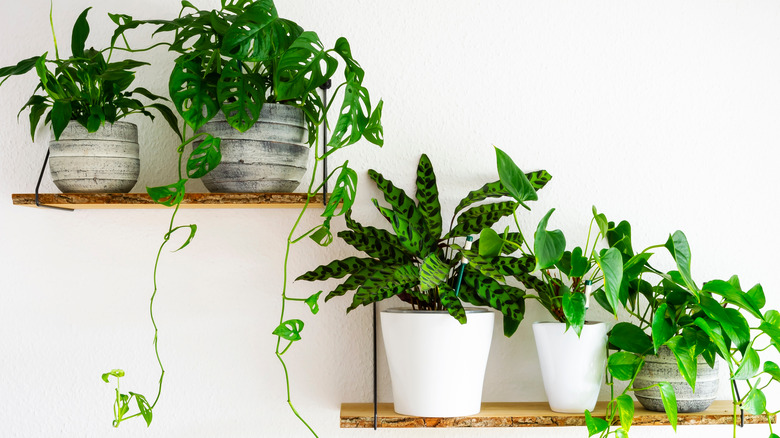Here's How To Know When To Repot Your House Plants
House plants make any space cuter, right? This is essentially a fact, just as much as how house plants are great for your health. What's less factual is the idea that house plants are super easy to take care of and require little attention. You have to know how to handle them for them to properly flourish, and this includes knowing when to repot them. It's easy to make mistakes when caring for these plants, especially because of the fact that they're indoors, but there are also perfect house plants for beginners, which makes the starting out process so much easier.
When it comes to caring for house plants, one general rule stands above the rest according to Gardener's Path: give your plants "everything in moderation." They noted that this includes water, light, and food, the three fundamental things that keep plants, well, alive. They also need things like airflow to help them thrive. "This can easily be achieved by running ceiling fans in your home to keep the air circulating. Still air, on the other hand, can cause a host of ailments in your houseplant," Gardener's Path explained.
While these tips are crucial, you might be left with other questions. For example, when does one repot a house plant? Do they even need repotted at all?
Only one season a year makes for the best repotting
The simple answer is yes — house plants do need repotted. According to PennState Extension, you should repot your indoor plant if its roots are growing through the drainage holes, if your potting mix is drying out quickly, and/or if you notice a lack of growth despite your pot being fertilized. If you see signs of these things and decide to repot, you need to find the right time to do so. "The best time to repot a plant is in the spring so that actively growing roots will have enough time to grow into newly added potting mix," PennState Extension explained.
To start, water your plant an hour before you're going to repot it. You may also need to prepare your container depending on its material. If it's plastic, you can jump right into the repotting process, but if it's clay, soak it in water overnight before repotting your plant to prevent it from absorbing the potting mix's moisture when repotting.
From there, add potting mix to your new container, remove the house plant from its original container by teasing its roots, place the plant rootball-first into the new container, and then add more potting mix to cover the rootball. PennState Extension also noted that you should leave an inch of space between the top of the potting mix and the top of the container so your plant can grow. Then, you just water your plant and nestle the container wherever you want it in your home.
This is a perfect project to include in your annual spring cleaning if you subscribe to that tradition, but even if you don't, it's important to know that springtime is the ideal time to repot any house plants that may need an extra love.

